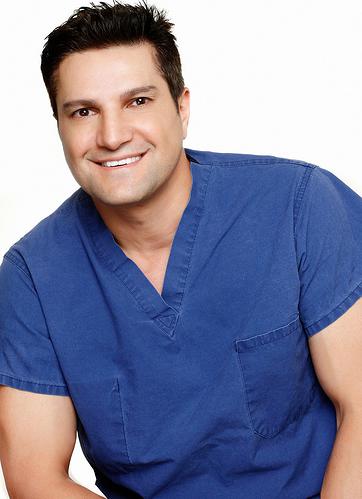From silicone to saline, Dr. Marc Malek gives AFM the 411 on everything you need to know about the different types of implants and which is right for you.

Dr. Marc Malek has been practicing for more than 12 years in the Valley of the Sun as a Board Certified Plastic Surgeon. Dr. Malek and his team at Dr. Marc Malek Plastic Surgery follows the motto, “In Every Body there is a Work of Art.” As a top plastic surgeon, Dr. Malek works with each patient to achieve enhanced results that complement his or her natural features. It’s no wonder he’s the best doctor for breast augmentation and breast implant revision in the Valley.
Stay tuned for more of Dr. Malek’s expert answers to important and frequently asked questions about breast augmentation and revision.
1. What are the differences between silicone and saline and which one is best for me?
Silicone and saline implant are both options for patients who are over the age of 22. Silicone implants tend to be softer feeling and more supple looking. This becomes a very important when you start with less natural breast tissue. Since the implant will make up the majority of your final breast volume it will be of major benefit to have the texture of a more natural feeling implant. So it is really about the ratio of real breast to implant that is in question. If most of what we feel is implant silicone is more realistic in feel an appearance. For those who already have a large breast that is soft but low in position higher projection and fullness in the upper portion of the breast will provide a more youthful appearance. The fullness that is created by a saline implant will complement the soft natural tissue that is located in the lower portion of the breast. I commonly recommend Celine implants for a mom who has a large breasted has fallen and needs a breast lift. Small implant will serve to provide cleavage and height in the upper pole of the breast. There's no additional benefit to it silicone in this particular patient type.silicone implants do carry additional cost for material as well as require imaging in the form of an MRI as recommended by the FDA. This is due to the fact that we cannot diagnose a rupture of the silicone implant since the gel is cohesive in nature. With saline implants the salt water is absorbed through the implant pocket and a deflation will be noticed within days of occurring. Therefore no studies are required detect a leaking saline implant. The incision length also varies between silicone and saline. Since Celine implants are filled inside the pocket and incision of 1 inch length is required for any size implant. With silicone implants the incisions will vary in length as the implant size increases. This is due to the fact that silicone implants are pre-filled and sealed at the manufacturers.do you know if that MRIs are not covered by insurance carriers since they are related to cosmetic procedures.
